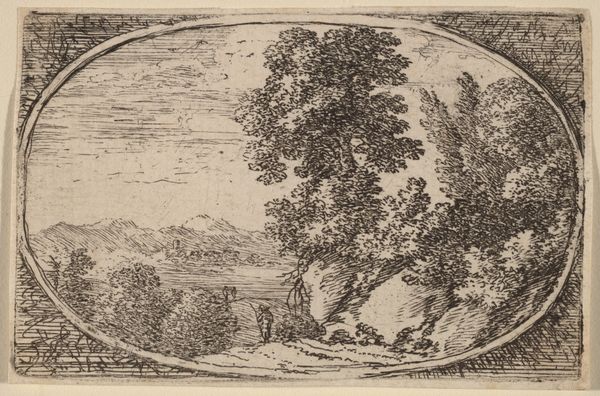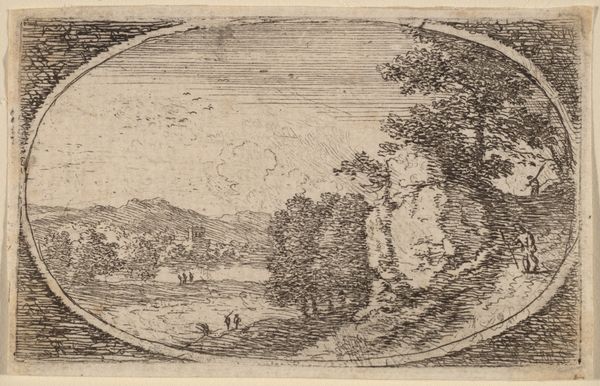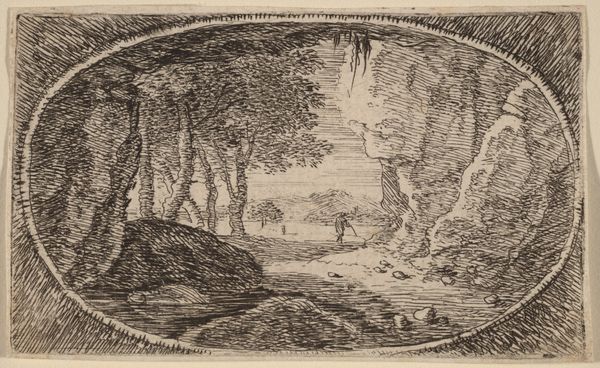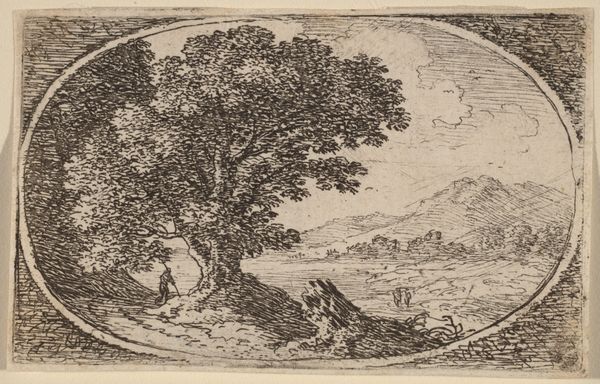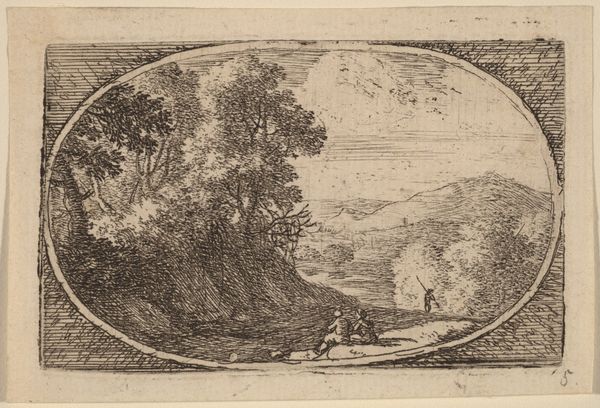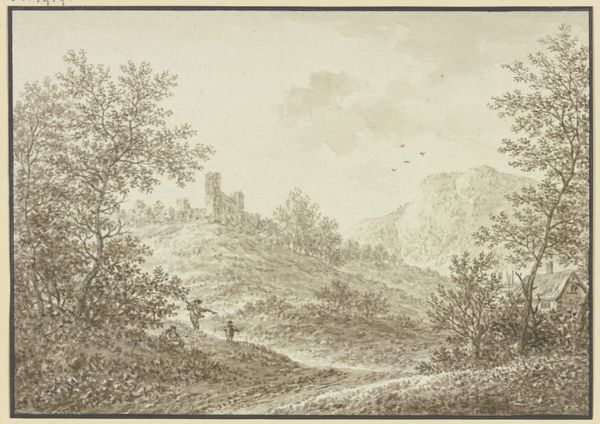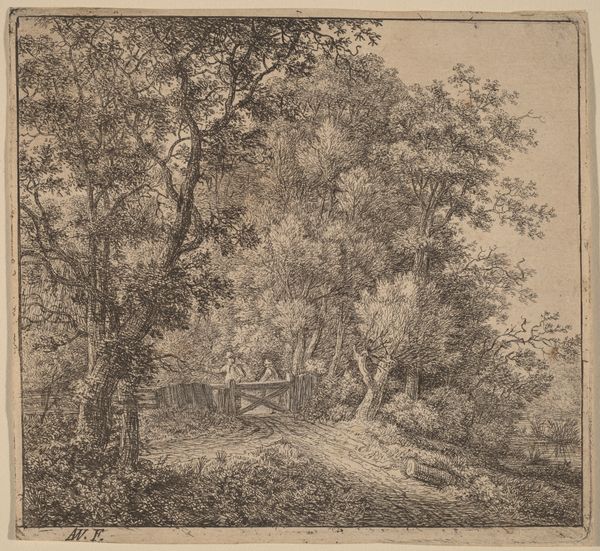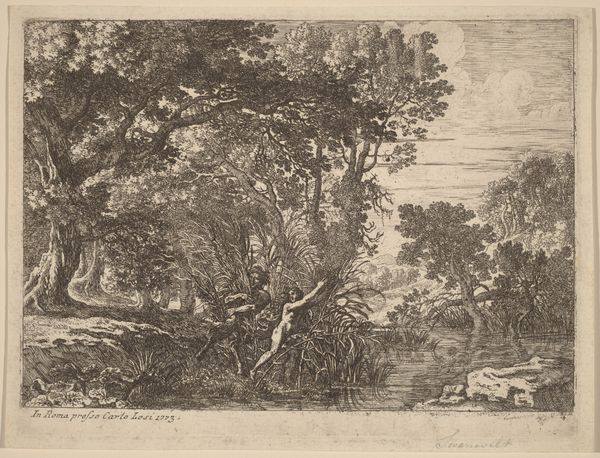
drawing, print, etching, intaglio
#
drawing
#
baroque
# print
#
etching
#
intaglio
#
landscape
Copyright: National Gallery of Art: CC0 1.0
Curator: "A Winding Road," an intaglio print—specifically an etching—by Herman van Swanevelt. It exemplifies the Baroque landscape style. The print captures a pastoral scene, encased within an oval frame, filled with meticulous details despite its small scale. Editor: My first impression is one of tranquil solitude. The density of line work suggests a certain moodiness, doesn't it? Almost like the quiet before or after a storm, rendered with an almost obsessive hand. Curator: Precisely! Van Swanevelt was working in Rome during the Baroque period, where the influence of artists like Claude Lorrain steered him towards idealised, Arcadian landscapes. This work exemplifies the common period style which aimed to emulate the idyllic calm of the Roman countryside, an environment undergoing significant transformation with expanding agriculture and changing patterns of land ownership. Editor: You can clearly see that idealized form in the careful placement of each element. Consider the balanced weight of the foliage, counterweighted by the human figures... It creates a harmonious viewing experience. However, beyond mere observation of form, how was it produced? What are we seeing here? Curator: As an etching, the image was achieved by using acid to bite into a metal plate, which was then inked and printed. It offered artists a degree of freedom that engraving didn't, and allowed for more expressive, sketchy lines to mimic drawings and wash techniques. The printmaking processes available during that time allowed for wide circulation and offered artists opportunity beyond the confines of unique painting or drawing sales. Editor: Right. And if we apply this framework for examination we might ask how Van Swanevelt’s landscape differs from purely pastoral scenes: note the meticulous rendering. The artist uses line work and form in a more idealized than realist, pastoral mode. I wonder about the material reality that subtends that pastoral imagery! Curator: Looking at the larger view then, prints such as this shaped perceptions of landscape and the social relation to landscape both for consumers and future artists and how they both thought and visualized environments. It goes beyond idyllic beauty, though; this etching illustrates the commodification of nature and artistic expression, demonstrating an era when landscape becomes a source of social meaning. Editor: An astute observation, indeed. The artwork makes an interesting contribution as evidence of social and material conditions that support not only art production but the distribution, trade, and consumption of cultural imagery. It shows that the materiality of the print speaks beyond the artistry. Curator: Absolutely. The materiality provides an intersection point from which social meanings take shape in this winding road, visually and theoretically.
Comments
No comments
Be the first to comment and join the conversation on the ultimate creative platform.


